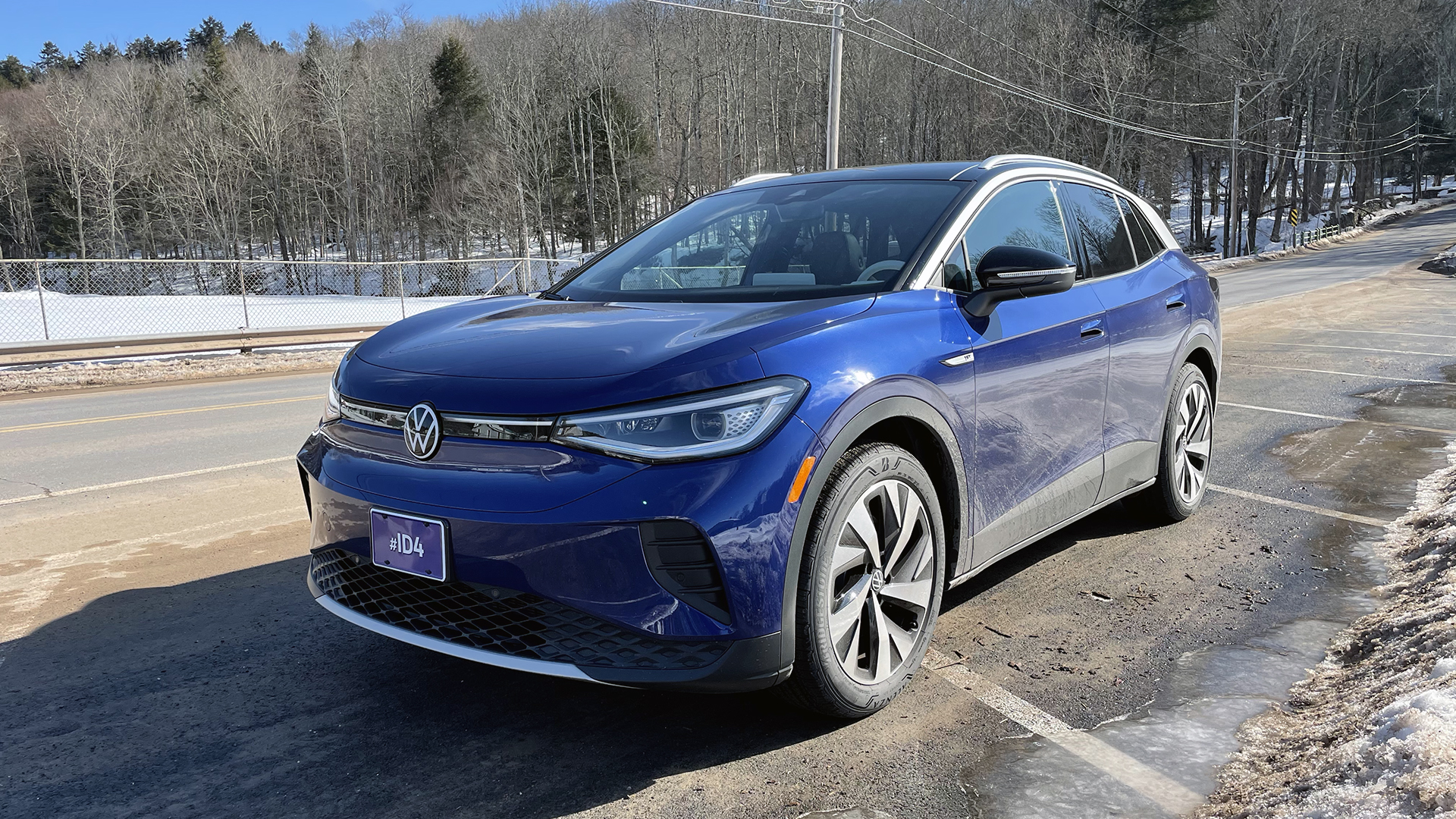The people at Volkswagen do not hold back when they talk about the new 2021 Volkswagen ID.4. “This is the most important car we’ve made since the Beetle,” reads some of the press materials, and they do not mean the Golf-based one with the flower vase from the 1990s. The original Beetle, arguably the most iconic car ever made, with more than 20 million sold across 80 years. Yeah, that Beetle. The ID.4 is a very, very big deal.
For the next three days, it’s in my driveway. What do you want to know about it?

I wrote a pretty extensive deep-dive on this car last fall after a press briefing in Brooklyn. But if you want the top-level version, this is VW’s first modern, mainstream EV, one designed to spearhead its electric revolution and hopefully steal sales from the Toyota RAV4, Honda CR-V and other crossovers in the process. It’s one of the first cars on VW’s electric MEB platform, which will underpin a new family of EVs as the German automaking giant prepares to begin phasing out internal combustion passenger vehicles later this decade. (The ID.4’s platform-mate, the Golf-sized ID.3 hatchback, will not be sold in North America.)
It uses an 82 kWh battery, a single rear-mounted motor, is rear-wheel-drive, has an estimated range of about 250 miles—VW has done extensive research on just how much people actually drive daily and this car is aimed at their needs—and boasts an extremely modern, forward-thinking interior and tech package. A public DC fast charger should add 60 miles of range in 10 minutes. It starts at $39,995 before any state or federal tax incentives; my loaded First Edition model is $43,995, so after rebates, it’s right on par with the cost of an average new car.
So this isn’t a Tesla Model S with Plaid Mode. It’s not a Porsche Taycan, either. It’s not a rocketship, and it doesn’t hover unless something has gone terribly wrong. It’s meant to be a normal car. It’s for normal people, who drive in normal ways, have normal income levels and probably drive at normal speeds. That’s how VW is aiming for huge volume sales and mass-market success.

So far, in my limited 40-mile drive home in it, that’s been my experience too. It’s a car. It does car things. It’s somewhat appliance-like in operation, but again, that is the entire point. Some notes:
–It’s definitely not one of those tear-your-face-off fast EVs, but it’s no slouch. Running late for a meeting I got it over 80 mph on a rural highway with no drama. In fact, there’s zero drama to be found anywhere. The ID.4 just goes and does its thing.
–The interior learning curve is a tad on the high side, but the 12-inch touch screen on my tester looks and feels great. It’s very Apple-like in design, from the “home” button to the big icons. Between that and the white interior, it feels more like an Apple Car than anything Hyundai could do.




–Handling is, so far, decent. It’s RWD and has a low center of gravity, but it’s still a crossover and thus tall. I wouldn’t call it athletic, but it’s not sloppy either. Decidedly average, like so many cars are in this segment.
–I don’t love the haptic touch panels on the steering wheel and below the screen; I’m glad the car has buttons, but I wish they were more button-like. A very minor complaint so far, all told.
–The weather’s pretty chilly in upstate New York right now and I may take it furniture-shopping this weekend (though I need a dresser and maybe a coffee table, and I’m not convinced it’s big enough) so this test will absolutely include normal car things. We’ll see how it handles hauling and the cold.
That’s it for me until I get more seat time. Now it’s your turn. What do you want to know about this thing?
